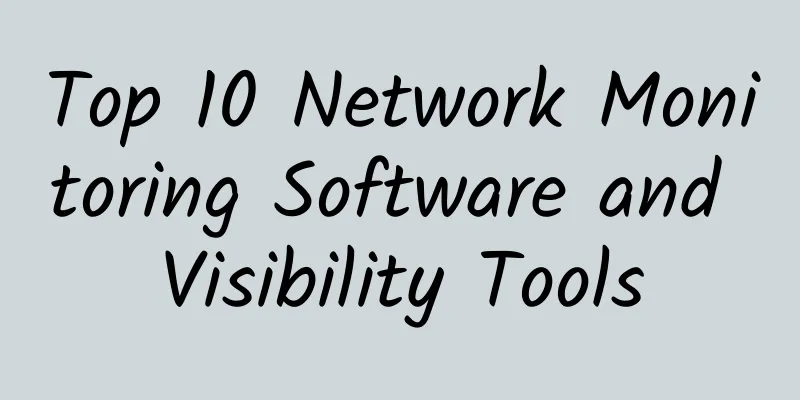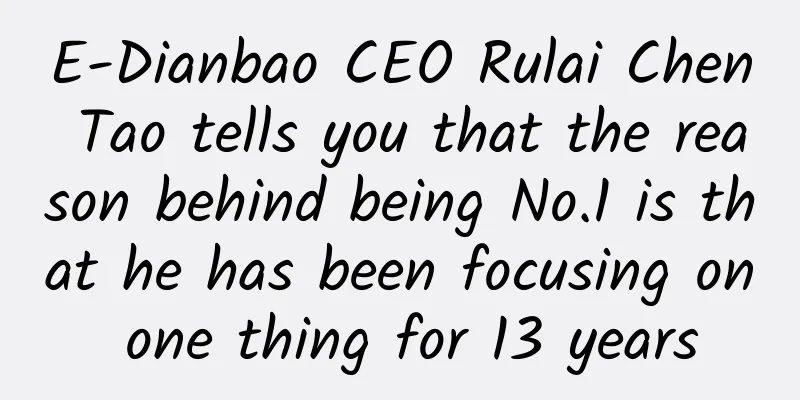In 2022, IT managers need to know about the seven popular and four unpopular technology investments!

|
Riding on the wave of digital transformation accelerated during the pandemic, companies will continue to actively promote the use of technology to drive innovation and transform business operations in 2022. To do this, technology investment is required. Recognizing this, companies are increasing their budgets for new and existing technologies. According to Accenture, by 2023, overall digital spending is expected to account for 55% of IT spending, an increase of about 10% from 2021. Ashley Skyrme, senior managing director at Accenture, said spending would focus on four key areas.
Here are seven hot and four cold technology investments that CIOs and other IT leaders will be making in 2022. Hot 1: Cloud-native managed servicesMark Shank, chief consultant at KPMG, said companies will invest in cloud computing management services. In the past few years, enterprises were afraid of being locked into vendors with their cloud investments. Now more and more cloud-mature enterprises are turning to cloud-native applications, and they are no longer worried about being locked in because they will get huge benefits in the short term. The biggest benefit is the ability to get more done, especially in a tight IT talent market. Previously organizations may have run their own data lakes, and when they migrated to the cloud, they were still responsible for managing the containers that ran their databases. Now they say they don’t want to be responsible for the infrastructure and just use the data services provided by the cloud vendors. This way, the internal people responsible for managing the cloud infrastructure can shift their attention to other areas. Concerns about vendor lock-in are less important than the services the vendor will be able to provide to the organization, enabling it to adopt the stack and become more agile, faster, and cost-effective in delivering products to market. Hot 2: Increased use of IoT sensors and analyticsDespite their “ups and downs on the hype curve,” IoT sensors are starting to gain more traction, with more investment going into managing and monitoring them. Organizations are using more sensors for things like energy tracking and laying out private 5G networks to facilitate communications, or for better tracking and efficiency in warehouses. Top 3: Employee Engagement Platforms2022 will be a year of replatforming and consolidation for healthcare provider ChenMed in preparation for growth, said Steven May, chief technology officer and interim chief information officer. ChenMed is in a “hypergrowth phase” and has been evaluating whether it has the right platform, technology, and processes in place to accommodate this aggressive growth. This means taking a hard look at whether existing systems can scale and handle this growth. That includes a focus on employee engagement technology to create a better employee experience. We haven't picked a vendor yet, but in general, that's the theme for 2022. In this new world, how do you apply technology to all of these great new employee experience tools and embed those tools into new operating models for a richer employee experience? That's going to be a big investment. ChenMed is looking to go beyond the simple collaboration tools it already uses. There are other tools that go beyond just video and audio conferencing and shared whiteboards to create more interesting and engaging workspaces. Take, for example, a tool called Sococo, which lets users create a digital office space. These tools try to find innovative ways to elevate the perspective of social interaction rather than simple tools. Hot 4: Data and analyticsArcutis Biotherapeutics, a late-stage biopharmaceutical company focused on developing innovative products in immuno-dermatology, is investing heavily in its data and analytics infrastructure, said Raj Madan, chief digital and technology officer. This includes foundational data and analytics to ensure we can monitor and optimize our commercial operations and proactively track and [take] action when our medical affairs team engages with dermatologists. There will also be additional strategic initiatives around patient and healthcare provider segmentation and targeting to ensure Arcutis maximizes its reach and engagement and continues to meet the needs of people with skin conditions. The company will also increase investment in marketing and advertising technology. In the spirit of agility, Arcutis recently invested in a suite of AI tools for experimental purposes to see if they could help officials tap into proven or new targets. The results were not encouraging. The insights we gained from these tools were not unknown to our medical team, so we decided not to experiment further in this area. This is a great example of ‘fail fast,’ learn lessons, and move on. Madan said IT had asked for a 20% increase in spending, and they agreed that we would break the work into smaller pieces, and if each sprint delivered value to Arcutis’ patients, healthcare providers and employees, IT could potentially receive more incremental funding. What this essentially means is that we want to invest more in data, analytics and digital spend as we deliver and prove more value for our initial investment. Top 5: Machine Learning, Data ScienceMachine learning and data science will continue to be key areas of investment. Acuity Knowledge Partners provides research, analytics and business intelligence to the financial services sector. “We have a range of machine learning models in production and a ton of new opportunities to explore,” said David Fellows, the company’s chief digital officer. “To ensure our infrastructure doesn’t become a bottleneck for getting models into production, I expect we’ll focus this year on machine learning operations, more commonly known now as MLOps.” Filos said Acuity has a long-standing relationship with AWS, and company executives are working with the cloud provider to build ML pipelines using the SageMaker machine learning platform. The goal is to allow Acuity to put new models into production as frequently as the company's SaaS-based applications and digital services. Top 6: Customer ExperienceEpson America Chief Information Officer Michael Wang said that in 2022 Epson will focus on several IT projects, focusing on enhancing its brand to make it synonymous with "easy-to-operate business" for partners and provide a "world-class customer experience." To achieve this, IT is looking at how to turn customer and partner data into business insights to better anticipate customer and partner needs. Whether it’s creating an alert system for end users when warranty expires, offering extended service when appropriate, or providing proactive B2B services for the equipment that customers rely on to run their businesses, this seamless approach to delivering value is a priority for the IT industry. For enterprise customers, IT departments will use data to preemptively resolve potential product issues, helping them avoid downtime and, ultimately, lost revenue. They are also committed to providing a world-class online engagement experience and are investing heavily in ensuring interactions with customer and partner portals are seamless and hassle-free. Customers want to engage with us on their own terms, and IT has spent resources investigating how to best support that experience. This includes transforming online interactions with Epson, ensuring customers only need one ID to manage all interactions. In 2021, Epson increased its investment in initiatives to improve the customer e-commerce experience as purchasing patterns shift from physical stores to online shopping. These projects will continue and may expand in 2022. Hotspot 7: SecurityJason Johnson, CIO of music technology and musical instrument retailer Sweetwater, said security has been a "trending spend for several years" and 2022 will take those investments to the next level. This will include more funding for vendor risk management as supply chain attacks and 2021 “strengthen the presence of borderless networks and work-from-home. Public cloud adoption will also become a long-term strategy for companies, which will accelerate the ability to deliver robust security and borderless networks. Cold 1: Legacy data warehouses, data lakes, appliances, and private cloudsEnterprises are seeing the "cost structure" of many legacy databases and data structures that were used internally for analytical output. Now they are taking advantage of newer technologies in the market, Shank said. This will lead to divestment of legacy warehouses, data lakes and appliances. There is also a view that funding for private cloud is becoming somewhat cold because "velocity is coming down." Looking across the industry, what is happening now is that there used to be a high growth rate and now it's coming down a lot. On-premises data warehouse platforms are fading from the market because the capabilities are being delivered in the cloud and vendors are not yet consuming them as a service. Cold 2: Local Data CenterSpending on internal data centers will remain flat or decline slightly as enterprises look to leverage the cloud because the costs of managing their own data centers, racks, stacks, and builds are enormous. Cold 3: On-premises workloads, hardwareAcuity's cloud strategy was already very mature, but the pandemic highlighted the need for the company to accelerate the migration of its remaining on-premises workloads. Internal workloads represent a disproportionate drag on our time, so we will no longer be making any investments in internal applications or server infrastructure. As a division, Acuity is reevaluating its hardware strategy and related spending. We plan to move everyone to a lower-cost hardware or bring your own hardware model today, and we hope that our pay-as-you-go (Desktop as a Service) strategy will allow us to move away from the traditional end-user hardware computing model and facilitate capital shifts. Cold 4: Third-party software developmentOutsourced development will give way to insourcing as agile software development wins over the enterprise. As a result, any software development contract will be slow to make progress in building a differentiated customer experience. IT department capex will increase by about 25% and staffing will increase by about 50%. I believe most businesses are investing heavily in IT right now to improve their product/service leadership in the market. If they are not, they need to be. At this point, every company is a software company. |
<<: In 2022, can 5G messaging break through the bottleneck?
>>: Seven QoS best practices for monitoring cloud traffic
Recommend
Huawei's Children's Day gift: from "one piece of chalk, one lesson" to VR participatory teaching
In order to improve the quality of basic educatio...
Huawei Network Energy "Innovation" on the Road
[51CTO.com original article] Introduction: "...
Ministry of Industry and Information Technology: Adjustment of 700MHz frequency band frequency usage planning
Recently, the Ministry of Industry and Informatio...
New product pre-sale | Aruba Instant On MU-MIMO dual-band Gigabit Mesh wireless AP series products starting at 606 yuan
Today I would like to introduce to you Aruba laun...
How to Understand and Evaluate Potential Colocation Data Center Providers?
Today, as demand for colocation and wholesale dat...
9 correct views on the cancellation of data roaming charges
On July 1, data roaming charges were officially c...
Review and Outlook of China's 100-day 5G Licensing
Since June 6, when the Ministry of Industry and I...
A fancy way to solve inter-VLAN routing
In a local area network, we use VLAN to group dif...
What the future of wide area network (WAN) management looks like
The recent surge in the number of employees worki...
5G networks need to overcome three major barriers to large-scale commercial use
Although 5G licenses have been issued, the commer...
CAICT answers hot issues on “number portability” service
On November 27, 2019, China Telecom, China Mobile...
The fourth largest operator is preparing to release numbers, and will become a 5G market leader as soon as it enters the market
Many people may not have heard of China Radio and...
Ministry of Industry and Information Technology: my country's 5G mobile terminal connections reached 365 million, accounting for more than 80% of the world
On August 3, at the 2021 Global Digital Economy C...
Growth and development opportunities brought by 5G to IoT companies
Since the first major announcement just two years...
Passive Wi-Fi technology bridges the digital divide
The digital divide is a term used to describe the...







![[Black Friday] Justhost has a 30% discount for a limited time, 22 data centers in Russia, the United States, Singapore, etc. are available](/upload/images/67cabce3ceaff.webp)

